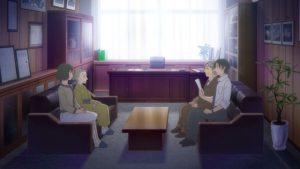 Kono Oto Tomare continues to be the draft horse of anime 2019. It does the heavy lifting with utter reliability, it’s almost universally taken for granted, and manages to accomplish exactly what it sets out to do every time with few surprises along the way. It also forms an almost perfect Yin-Yang dichotomy with Beastars, which is all about opacity and interpretation. KoT never hides what it’s all about – it’s a totally honest and straightforward story that for me never fails to make an emotional connection.
Kono Oto Tomare continues to be the draft horse of anime 2019. It does the heavy lifting with utter reliability, it’s almost universally taken for granted, and manages to accomplish exactly what it sets out to do every time with few surprises along the way. It also forms an almost perfect Yin-Yang dichotomy with Beastars, which is all about opacity and interpretation. KoT never hides what it’s all about – it’s a totally honest and straightforward story that for me never fails to make an emotional connection.
 The Doujima Akira arc is a good illustration of this. I don’t think too many people doubted that she’d eventually be won over by the Tokise koto club, but the destination wasn’t the point, it was the journey. What mattered was why she was put in this position in the first place – what happened in her own life to make her close herself off to others and live as an extension of her grandmother’s ambitions? If it’s about anything Kono Oto Tomare is about connections, in every shape and form – what causes people to sever them, and the process of opening yourself up to forming new ones.
The Doujima Akira arc is a good illustration of this. I don’t think too many people doubted that she’d eventually be won over by the Tokise koto club, but the destination wasn’t the point, it was the journey. What mattered was why she was put in this position in the first place – what happened in her own life to make her close herself off to others and live as an extension of her grandmother’s ambitions? If it’s about anything Kono Oto Tomare is about connections, in every shape and form – what causes people to sever them, and the process of opening yourself up to forming new ones.
 Rather than Doujima-san, though, the character who (again) quietly stands out in this episode is Takinami-sensei. He’s a bit of a walking billboard for connections himself, having been driven by his own upbringing to cut off the creative side of himself from others. The club won him back, and the thing about someone so reluctant to commit is that when Suzu-chan does relent, he doesn’t do so in half-measures. His conversation with Doujima-san was my favorite scene of the episode, because it shows in no uncertain terms that Suzu-chan always has the club’s back, whether they know it or not. It’s not about the credit – he’s simply decided they’re worth it. They don’t know all he does for them, and that’s fine – I honestly think he prefers it that way.
Rather than Doujima-san, though, the character who (again) quietly stands out in this episode is Takinami-sensei. He’s a bit of a walking billboard for connections himself, having been driven by his own upbringing to cut off the creative side of himself from others. The club won him back, and the thing about someone so reluctant to commit is that when Suzu-chan does relent, he doesn’t do so in half-measures. His conversation with Doujima-san was my favorite scene of the episode, because it shows in no uncertain terms that Suzu-chan always has the club’s back, whether they know it or not. It’s not about the credit – he’s simply decided they’re worth it. They don’t know all he does for them, and that’s fine – I honestly think he prefers it that way.
 Once the club is assembled for practice, it’s also clear that even if Takinami-sensei isn’t someone who can teach the kids the finer points of the koto, he’s still ultimately their real teacher because he understands both group dynamics and ensemble music in a way Akira does not. Still, Doujima-san is clearly not “useless” as she fears – though ironically it was club’s unbidden act of listening to her performance that seemed to move the needle more than any active teaching on her part. It was a tutorial in the importance if precision and exactitude – the draft horse of performance, while the thoroughbred of prodigious raw talent gets most of the attention.
Once the club is assembled for practice, it’s also clear that even if Takinami-sensei isn’t someone who can teach the kids the finer points of the koto, he’s still ultimately their real teacher because he understands both group dynamics and ensemble music in a way Akira does not. Still, Doujima-san is clearly not “useless” as she fears – though ironically it was club’s unbidden act of listening to her performance that seemed to move the needle more than any active teaching on her part. It was a tutorial in the importance if precision and exactitude – the draft horse of performance, while the thoroughbred of prodigious raw talent gets most of the attention.
 Doujima’s background does give her an ability to relate to the members of the group who share her frustration – they must rely on craftsmanship while the geniuses can fall back on art. The truth is that it’s the grinders that make up the bulk of the group – only Satowa and Chika are true prodigies among them. When Sane struggles as his 17-string is sandwiched between the two geniuses’ 17-string and solo, Akira sees the problem and the danger immediately. But again, it’s not her active participation that turns the tables – it’s Sane’s own determination and the bond he has with the others (especially Chika).
Doujima’s background does give her an ability to relate to the members of the group who share her frustration – they must rely on craftsmanship while the geniuses can fall back on art. The truth is that it’s the grinders that make up the bulk of the group – only Satowa and Chika are true prodigies among them. When Sane struggles as his 17-string is sandwiched between the two geniuses’ 17-string and solo, Akira sees the problem and the danger immediately. But again, it’s not her active participation that turns the tables – it’s Sane’s own determination and the bond he has with the others (especially Chika).
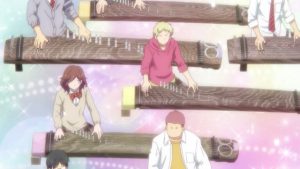 At this point none of these children is willing to fail, because that would mean letting the others down and that would be unthinkable. Whether it would be Sane struggling to understand the fine line between interacting with the solo and being influenced by it or Kouta’s perpetual war with tempo (it’s Takinami, not Doujima-san, who realizes it’s time to remove the training wheels – the metronome) failure is simply not an option. It’s the strength of the connection between the club members that won both Suzu-chan and Akira over and provides their greatest asset as a performance group.
At this point none of these children is willing to fail, because that would mean letting the others down and that would be unthinkable. Whether it would be Sane struggling to understand the fine line between interacting with the solo and being influenced by it or Kouta’s perpetual war with tempo (it’s Takinami, not Doujima-san, who realizes it’s time to remove the training wheels – the metronome) failure is simply not an option. It’s the strength of the connection between the club members that won both Suzu-chan and Akira over and provides their greatest asset as a performance group.
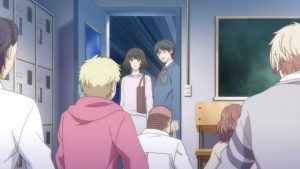 The hill to climb is still a steep one, because the things Takinami knows he knows because of a lifetime of experience. He can tell the kids they need to understand the flow of the piece and how each of them fits into it, but this is a language he’s spoken since childhood and a composition he’s written himself. There’s no substitute for experience, but Suzu-chan understands his charges so well. He knows what will drive them best is a challenge, and having them watch Satowa and Doujima-san play together is a masterstroke. They represent a perfect marriage of inspiration and precision, and their short demonstration shows the others (especially Chika) just how much Satowa’s performance is held back by their own level. Only by raising that level – through precision but also in Chika’s case through embracing his own genius – can they allow Satowa and the entire ensemble to be at their best.
The hill to climb is still a steep one, because the things Takinami knows he knows because of a lifetime of experience. He can tell the kids they need to understand the flow of the piece and how each of them fits into it, but this is a language he’s spoken since childhood and a composition he’s written himself. There’s no substitute for experience, but Suzu-chan understands his charges so well. He knows what will drive them best is a challenge, and having them watch Satowa and Doujima-san play together is a masterstroke. They represent a perfect marriage of inspiration and precision, and their short demonstration shows the others (especially Chika) just how much Satowa’s performance is held back by their own level. Only by raising that level – through precision but also in Chika’s case through embracing his own genius – can they allow Satowa and the entire ensemble to be at their best.


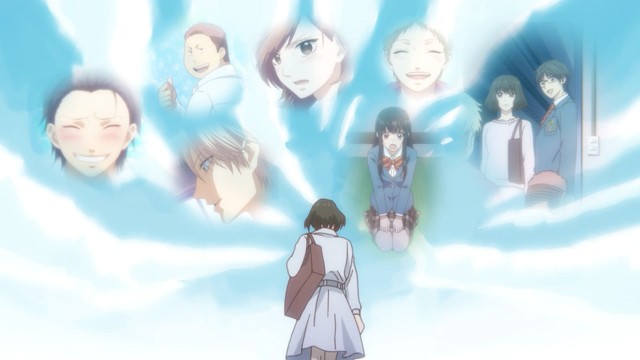

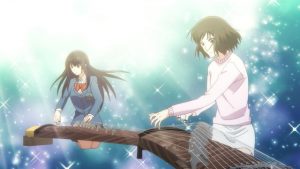

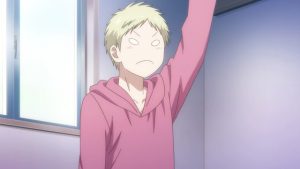
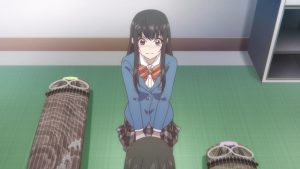

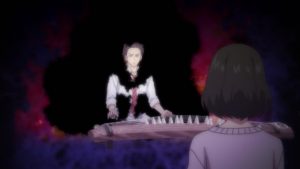






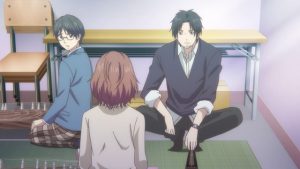



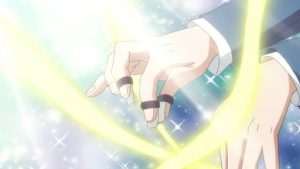

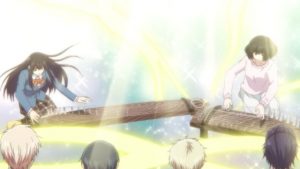



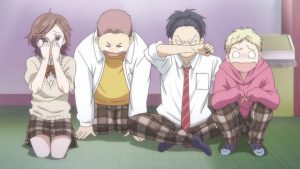


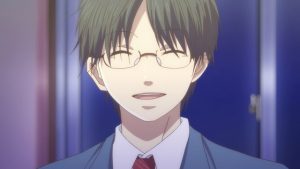
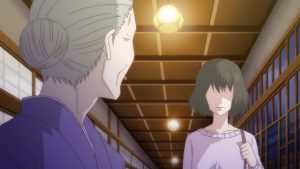
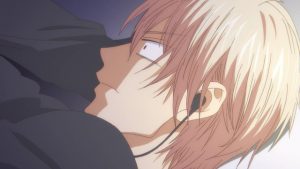
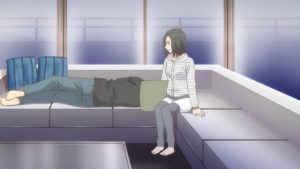
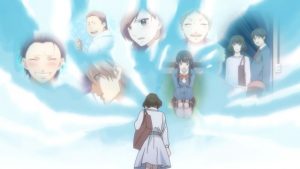

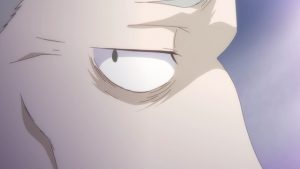
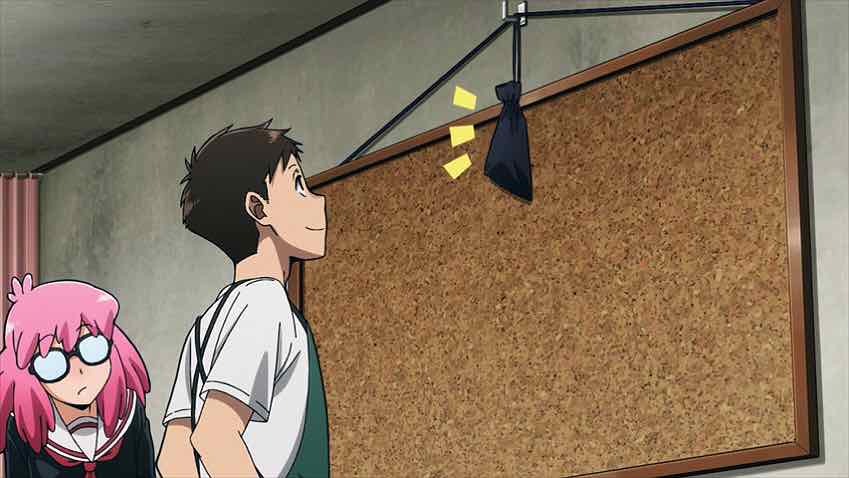

leongsh
November 18, 2019 at 2:02 pmIt just delivers methodically, step-by-step.
The interplay between Satowa and Akira in their demonstration of ensemble playing was beautiful. The lesson/message was well delivered by the demo. For Chika, it is a multiple whammy – not only does it show that Satowa is being held by them but also his late grandfather’s words about the difference between playing solo and playing as an ensemble.
p.s. Following the manga every month is like tucking into a familiar warm comfy comforter/blanket in winter.
Guardian Enzo
November 18, 2019 at 3:29 pmWhen I’m substantially ahead of the adaptation in a manga I tend to pause reading it while the anime is airing, just so I’m not simultaneously tracking two narratives. But yes, I would agree that the manga is every bit the old reliable that the anime is. The current arc isn’t the absolute pinnacle of KoT for me, but this series doesn’t really have lulls for me.